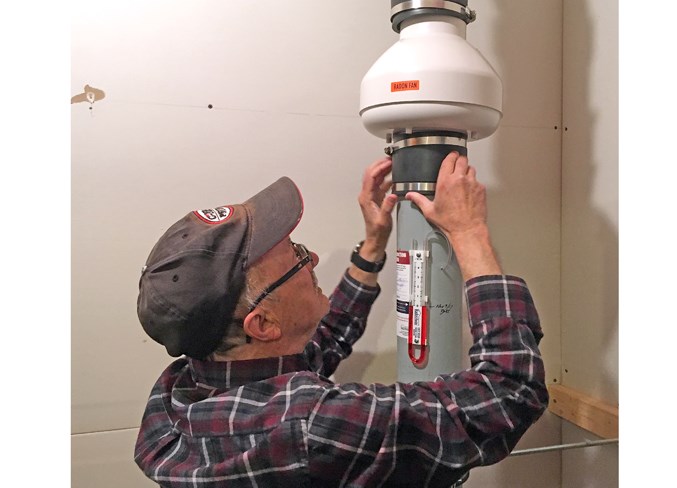INNISFAIL - The percentage of Innisfail homes where elevated radioactive gas levels were recently detected does not come as a surprise to the executive director of the Canadian Association of Radon Scientists and Technologists.
Pam Warkentin says a Health Canada survey in 2010 and 2011 found that about eight per cent of homes in Alberta had radon levels above the guideline of 200 becquerels per cubic metre (Bq/m3).
Prolonged exposure to high levels of radon has been associated with an increased risk of developing lung cancer, according to Health Canada.
During a 100 Radon Test Kit Challenge in Innisfail this past winter, 15 per cent of participating homes had radon gas levels above the Canadian guideline.
“And so the fact that was 15 per cent is fairly, well it’s not unexpected for the province of Alberta,” Warkentin told Innisfail’s municipal council in July when presenting the data from the challenge.
The percentage is above the provincial average Warkentin noted, but added more data would be helpful so “we could say that it is really reflective.”
While there were free kits available to test 100 homes or more, only 27 Innisfail homes were tested during the winter of 2023.
“We would have liked to have had more of the 100 test kits taken up and it would be great to get more people to test to provide us a little bit more data that we could say that it is really reflective,” she said. “As we start to get closer to 100 participants, we start to see that it actually is consistent with a typical average across the city or the area.”
Of the 27 Innisfail homes tested, 10 (37 per cent) had radon levels under 100 Bq/m3, 13 (48 per cent) had levels of between 100 and 200 Bq/ m3 and four (15 per cent) had levels of over 200 Bq/ m3 but under 600 Bq/ m3 .
The majority of the homes above the guideline had levels of just over 200 Bq/ m3 with the highest being 280, Warkentin said.
Radon is a radioactive gas that is found naturally throughout the environment. It is produced by the decay of uranium found in rocks and soil. Since radon is a gas, it can move freely through the soil enabling it to escape into the atmosphere or seep into buildings.
Health Canada first established a radon guideline in 1988 with an action level of 800 Bq/m3.
Since 2007, the Government of Canada recommends action should be taken to lower the radon gas level of any home that has levels above 200 Bq/m3.
Since 2014, the Alberta Building Code has required the installation of a short “radon stub pipe” through the basement floor of new houses as a connection point if a system is required.
Warkentin said there is a request being evaluated for a change to the national building code to require the pipe go fully through the building and exit outside.
Testing for radon prior to construction of new homes is not recommended. The radon level guideline is for inside buildings, not outside.
“The mitigation to reduce the levels isn’t that expensive so we do recommend you build the house and once it’s occupied you would test and determine if the radon levels are high,” she said.
Radon mitigation can include measures which will include sealing, removing or ventilating.
There are no areas of the country that are 'radon free,' but there are areas of the country where high levels of indoor radon are more prevalent.
“The Prairies is certainly high. In Manitoba on average we’re seeing 30 per cent of the homes -- in fact some of them are much higher like 90 per cent -- in some of the communities in northern Manitoba. Saskatchewan, we’re seeing as well closer to 25 per cent, 30 per cent of homes across the communities we’ve tested there. So there is a source in our soil all across our country,” she said.
Innisfail councillor Don Harrison was a big proponent of bringing the 100 Radon Test Kit Challenge to Innisfail. He thanked both the Town of Innisfail administration and the organization Take Action on Radon for administering the program in the town.
Take Action on Radon is a national initiative funded by Health Canada with a mandate to bring together stakeholders and raise awareness of radon across Canada.
Through its 100 Radon Test Kit Challenge, it provides 100 radon test kits or more free of charge to communities to distribute to their citizens.
While there is no cost to participating communities, municipal staff time is incurred for organizing, distributing and collecting test kits.
With so few tests conducted as part of the 100 Radon Test Kit Challenge, Innisfail council discussed looking into continuing the program in some form. Administration has been directed to bring back the cost of continuing the radon program to a future council meeting.



